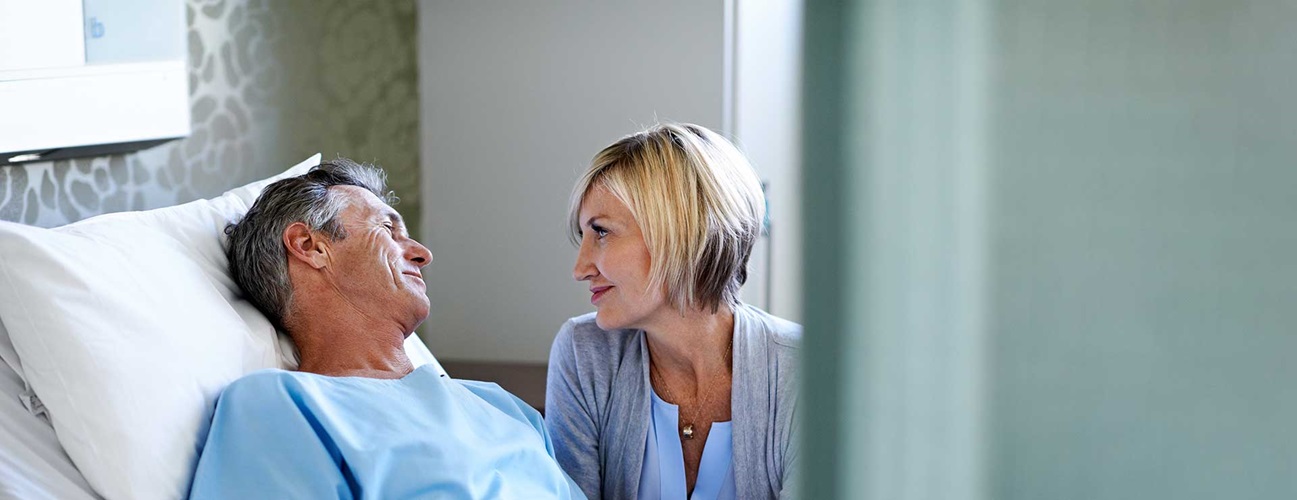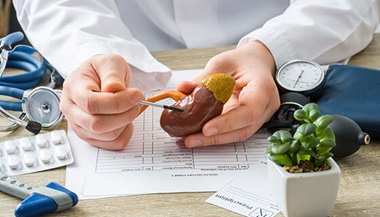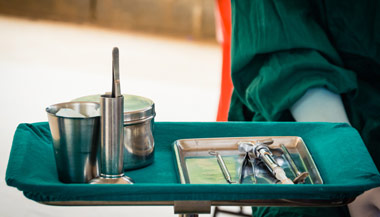Transurethral Resection of the Prostate (TURP)
What is a transurethral resection of the prostate (TURP)?
The prostate gland is found only in males. It sits under the bladder and wraps around the urethra. The urethra is the tube that carries urine out of the body. The prostate helps make semen.
A transurethral resection of the prostate (TURP) is surgery to remove parts of the prostate gland through the penis. No cuts (incisions) are needed.
The surgeon reaches the prostate by putting a tool (resectoscope) into the end of the penis and through the urethra. This tool is about 12 inches long and a half inch in diameter. It has a lighted camera and valves that control irrigating fluid. It also contains an electrical wire loop that cuts tissue and seals blood vessels. The surgeon guides the wire loop to remove the tissue blocking the urethra one piece at a time. The pieces of tissue are carried by the irrigating fluid into the bladder. They are flushed out at the end of the procedure. Another version of this procedure is called the button TURP. Instead of a loop, a small button-shaped device on the end of the resectoscope vaporizes the prostate tissue using an electrical current.
Why might I need a TURP?
TURP is most often done to ease symptoms caused by an enlarged prostate. This is often from benign prostate hyperplasia (BPH). BPH is not cancer. It's a common part of aging. When the prostate gland is enlarged, it can press against the urethra and interfere with or block the passage of urine out of the body.
Sometimes a TURP is done to treat symptoms only, not to cure the disease. For example, you may be unable to urinate because of prostate cancer, but surgery to remove the prostate isn’t an option. Then you may need a TURP.
There may be other reasons for your healthcare provider to recommend a TURP.
What are the risks of a TURP?
All procedures have risks. Some possible risks of this procedure include:
-
Bladder injury
-
Bleeding
-
Blood in the urine after surgery
-
Electrolyte abnormalities
-
Infection
-
Loss of erections
-
Painful or difficult urination
-
Semen that is ejaculated goes into the bladder and not out the penis (retrograde ejaculation), or there may be loss of ejaculation
-
Scar tissue
There may be other risks depending on your condition. Discuss any concerns with your healthcare provider before the procedure.
How do I get ready for a TURP?
Some things you can expect before the procedure include:
-
Your healthcare provider will explain the procedure and you can ask questions.
-
You will be asked to sign a consent form that gives permission to do the procedure. Read the form carefully and ask questions if anything is unclear.
-
Your healthcare provider will review your health history, and do a physical exam to be sure you’re in good health before you have the procedure. You may also need blood tests and other tests.
-
Follow any directions you are given for not eating or drinking before the procedure.
-
Tell your healthcare provider if you are sensitive to or allergic to any medicines, latex, iodine, tape, contrast dyes, or anesthesia.
-
Tell your provider about all medicines, herbs, vitamins, and supplements that you are taking. This includes both prescription and over-the-counter medicines.
-
Tell your provider if you have a history of bleeding disorders or if you are taking any blood-thinning medicines (anticoagulants), aspirin, or any other medicines that affect blood clotting. You may need to stop these medicines before the procedure.
-
If you smoke, stop as soon as possible to improve recovery and your overall health.
-
You may be given a sedative before the procedure to help you relax.
Based on your health condition, your healthcare provider may request other specific preparation.
What happens during a TURP?
TURP often requires a hospital stay. Procedures may vary depending on your condition and your healthcare provider’s practices.
Generally, a TURP follows this process:
-
You will be asked to remove any jewelry or other objects that might get in the way during surgery.
-
You will be asked to remove your clothing and will be given a gown to wear
-
You'll be asked to empty your bladder.
-
An IV (intravenous) line will be put in your arm or hand.
-
You will be placed on an operating table, lying on your back.
-
You will be given anesthesia to put you to sleep for the procedure. Sometimes a medicine is used that numbs your body from the waist down, so you can still be awake (spinal anesthesia). Your feet will be placed in stirrups that are raised up.
-
Your heart rate, blood pressure, breathing, and blood oxygen level will be closely watched during the surgery.
-
Once you’re sedated, a breathing tube may be put through your throat into your lungs and you will be connected to a ventilator. This will breathe for you during the surgery. A breathing tube will not be used if you have spinal anesthesia.
-
The surgeon may first inspect the urethra and bladder with a thin tube (cystoscope). This has a light and a camera on one end. This tube is passed through the tip of the penis, then into the urethra and bladder. This lets the healthcare provider check these areas for any tumors or stones in the bladder.
-
Next, the resectoscope is passed into the urethra. It's used to cut away the pieces of prostate tissue that are bulging or blocking the urethra. Electricity will be applied through the resectoscope to stop any bleeding. The pieces are flushed into the bladder. Then they are drained out through the urethra.
-
The resectoscope is removed.
-
The healthcare provider will put a soft, flexible tube (catheter) into your bladder to drain urine.
What happens after a TURP?
In the hospital
After the procedure, you may be taken to a recovery room and closely watched. Once your blood pressure, pulse, and breathing are stable and you are alert, you will be taken to your hospital room.
You may get pain medicine as needed. This may be given by a nurse. Or you may give it yourself through a device connected to your IV line.
Once you are awake, you may start to drink liquids. You will be able to eat solid foods as you are able to handle them.
The catheter will stay in place for 1 to 3 days. This is to help urine drain while your prostate gland heals. You will likely have blood in your urine after surgery. A bag of solution may be attached to the catheter to flush the blood and possible clots out of your bladder and the catheter. The bleeding will slowly decrease. Then the catheter will be removed.
Arrangements will be made for a follow-up visit with your healthcare provider. Your provider may give you other instructions after the procedure, depending on your situation.
At home
Once you are home, it will be important to drink lots of fluids. This helps flush out any remaining blood or clots from your bladder.
You will be told not to do any heavy lifting for several weeks after the TURP. This is to help prevent bleeding.
You may be sore for several days after a TURP. Take a pain reliever for soreness as advised by your healthcare provider.
You shouldn’t drive until your healthcare provider tells you to. Other activity restrictions may also apply.
Call your healthcare provider if you have any of these:
-
Fever
-
Chills
-
Trouble urinating
-
Trouble controlling your bladder
-
Changes in your urine output, color, or odor
-
More blood or clots in your urine
Your healthcare provider may give you other instructions after the procedure, depending on your particular situation.
Next steps
Before you agree to the test or the procedure make sure you know:
-
The name of the test or procedure
-
The reason you are having the test or procedure
-
What results to expect and what they mean
-
The risks and benefits of the test or procedure
-
What the possible side effects or complications are
-
When and where you are to have the test or procedure
-
Who will do the test or procedure and what that person’s qualifications are
-
What would happen if you did not have the test or procedure
-
Any alternative tests or procedures to think about
-
When and how you will get the results
-
Who to call after the test or procedure if you have questions or problems
-
How much you will have to pay for the test or procedure





